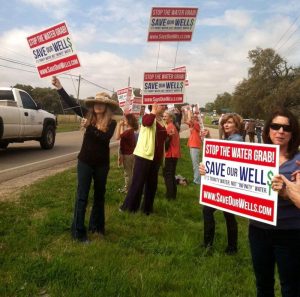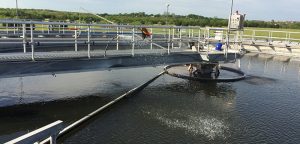By Andy Sevilla
Though Buda presently is under lax water restrictions, Stage II drought conservation measures are imminent if significant rainfall continues to miss Central Texas.
Recent rains alleviated drought conditions in the area, but aquifer levels in the Barton Springs Edwards Aquifer Conservation District (BSEACD) — Buda’s groundwater source and primary water provider — are continuing to drop again, according to the agency’s data.
And should the BSEACD board declare Stage II Alarm Drought at its meeting next week, Buda could quickly follow suit.
“At its regular meeting on July 24th, the Board of Directors decided not to declare Stage II Alarm Drought to allow for more time to assess aquifer conditions,” BSEACD said on its Facebook page. “That means, without significant rainfall, that the Board will likely declare Stage II Alarm Drought at their regularly scheduled meeting on August 14th.”
Buda Mayor Todd Ruge said the city usually follows BSEACD drought conservation measures, and if the district declares a need for more stringent water rules, the city would likely do the same.
Kyle, on the other hand, has remained under Stage II drought management restrictions despite the BSEACD’s Stage I water conservation declaration in late June, which calls for a 10 percent reduction in water use.
“Drought stages from our different providers can change as the weather changes, but as the city’s stewards of the water system we have to believe that longer term weather changes, as well as current conditions, support changing how we deal with the current drought status,” said Kyle Utilities Coordinator Jason Biemer.
The BESACD is “only one part of the water portfolio we (Kyle) have,” he said, therefore city officials assess their own local water situation.
Kyle has three primary water providers, Biemer said, including BSEACD and the Edwards Aquifer Authority for groundwater, and the Guadalupe-Blanco River Authority (GBRA) for surface water.
The GBRA is also Buda’s surface water source, though it’s a secondary source due to costs, Ruge said.
“The city is only legally compelled to follow its own water restrictions,” Biemer said, adding that Kyle is trying to keep its usage in line with the amount of water it can guarantee.
Over the last year, BSEACD, which provides groundwater for Buda and Kyle, has declared as much as Stage III Critical Drought, where permittees are required to reduce monthly pumping by at least 30 percent for historical permits.
That April 2013 critical drought declaration was the third in five years, according to the district.
After rain events in May slowly raised water levels at both drought-monitoring wells, BSEACD declared a Water Conservation Period late last month, where permittees are asked for 10 percent voluntary conservation, though no restrictions are in place.
While much of Texas still remains in drought, a state it has been in since 2011, climatologists predict relief may be forthcoming.
A study from Stanford University suggests the El Niño weather pattern, which typically brings Texas heavy rains and cooler temperatures, has a 76 percent chance of returning this fall. But, some say it may get bad before it gets better.
“While the drought triggers are both above their thresholds now, July and August are typically very hot and dry, so we could see spring discharge and water levels start to decline again,” Brian Smith, BSEACD Aquifer Science Team Leader said in a June 27 statement.
“Without more significant rainfall, it could be a month before one or both drought triggers are back below their thresholds and our Board could declare drought again,” he said.
And while the BSEACD could potentially declare drought status once again later this summer, the Edwards Aquifer Authority (EAA) is teetering on declaring stringent water restrictions.
Right now the EAA is at Stage III for the San Antonio pool, which provides some water to Kyle and is San Marcos’ groundwater source. Permittees are required to reduce their usage by 35 percent.
The EAA’s water level is a few feet above 630 feet, according to its website. Once the level drops below that 630 feet threshold for a ten-day average, the Edward Aquifer goes into Stage IV, which would require a 40 percent cutback.
San Marcos is presently under Stage III water restrictions.
For specific watering restrictions, visit www.cityofkyle.com and http://ci.buda.tx.us.









